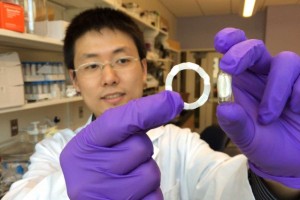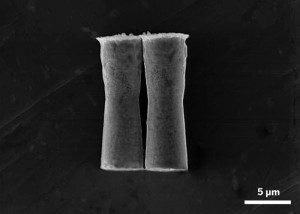
Schematic representation of the movement of the flower-like particle as it makes its way through a cellular trap to deliver therapeutic genes. Credit: WSU
According to ScienceDaily, researchers have developed a new method to deliver drugs and therapies into cells at the nanoscale level.
What makes this new approach particularly promising is that it does not lead to toxic side effects, unlike other similar efforts attempted by researchers. The problem frequently faced was in the delivery of the therapeutic genes into cells, the nanomaterials only showing low delivery efficiency of medicine and possible toxicity. (more…)



